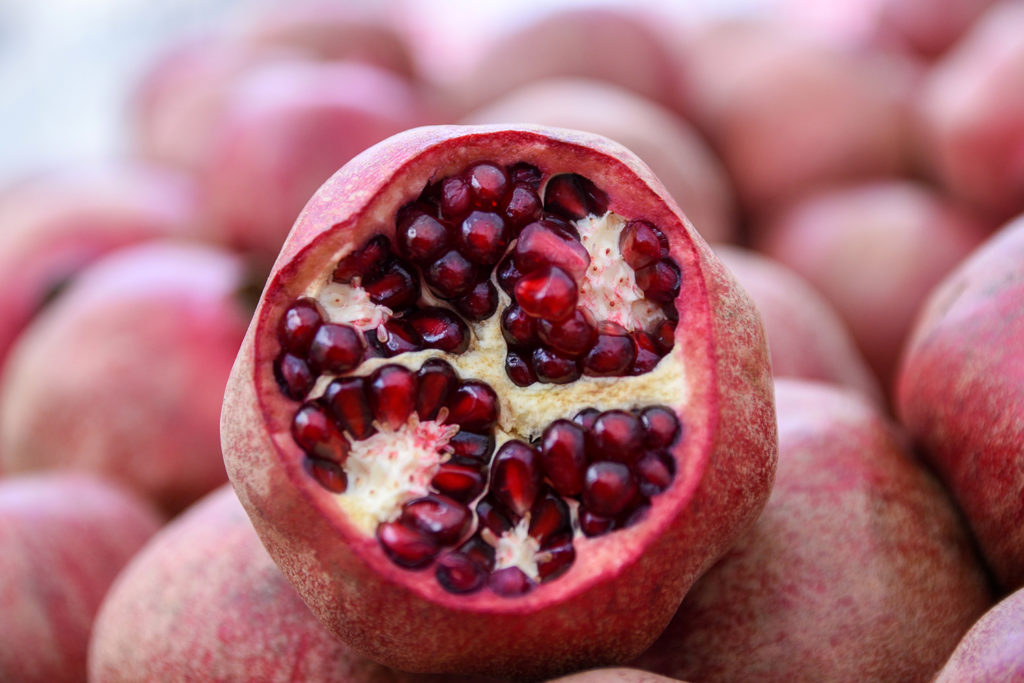Pomegranates

The name “pomegranate” comes from the Latin words pomum granatum, meaning “apple with many seeds.” Cut open its thick and leathery skin to reveal hundreds of sweet and tart sacs (called arils), each containing an edible seed. When picking pomegranates at the farmers market, look for deep ruby tones and check that your pomegranate is heavy for its size. The heavier the pomegranate, the juicier the seeds.
Despite their prominence in history, mythology, and Middle Eastern cuisine, pomegranates did not enjoy much reverence in the United States until the early 2000s, when some fresh findings about the health benefits of pomegranates, an enormous marketing campaign, and a faster way to consume the fruit catapulted it into eminence. Pomegranate juice suddenly became a popular beverage, health food, and cocktail ingredient. Pomegranates are high in antioxidants, like polyphenols, anthocyanins, and vitamin C.
To open a pomegranate, cut it into sections along the natural ridges of the fruit, then using a bowl of water, separate the arils from the pith with your hands. The arils will sink to the bottom of the bowl, while the pith floats to the top of the water. Skim out the pith and discard, and strain the arils from the water. The whole aril is edible, seed and all.
